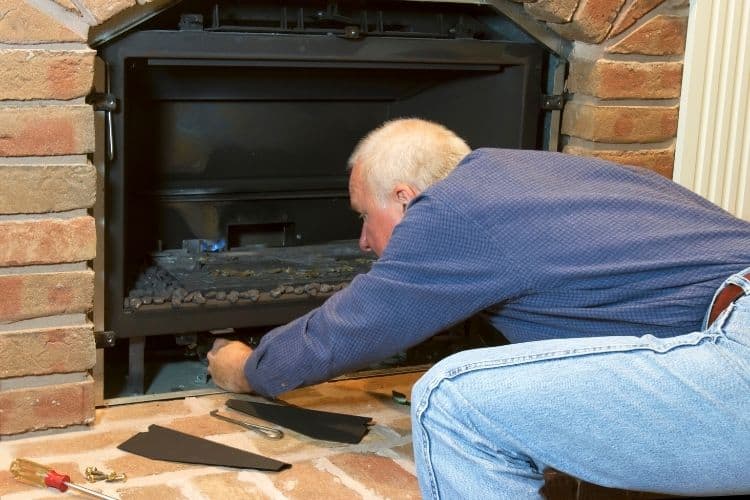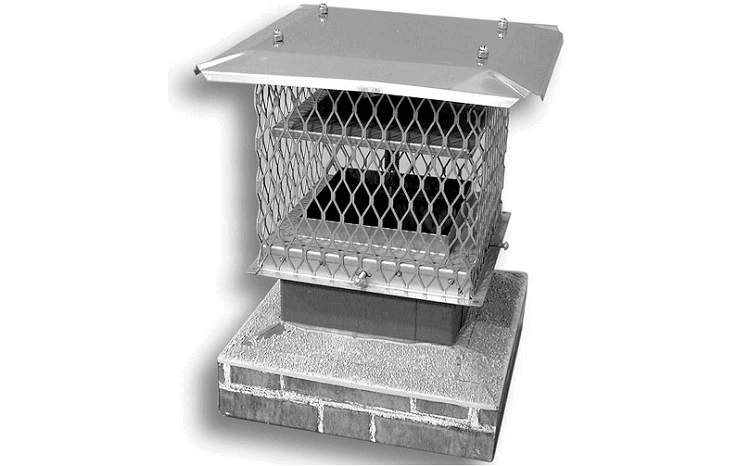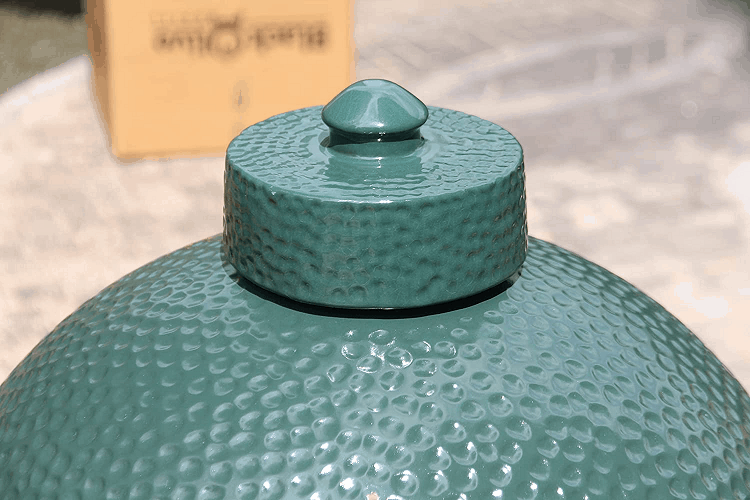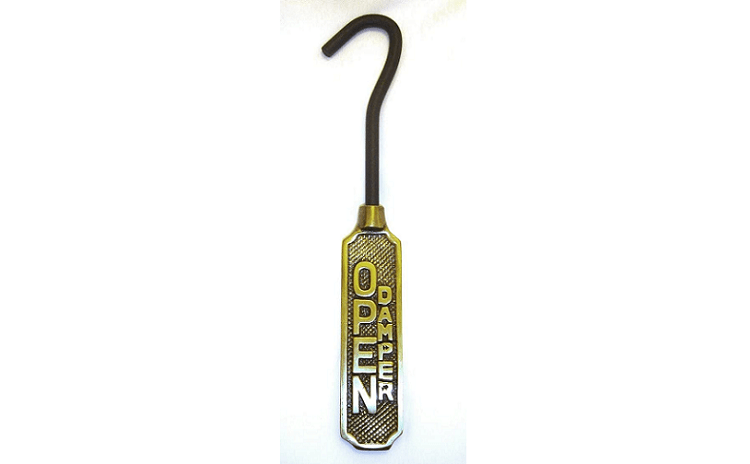If you own a modern home or condo, you may be concerned about its fireplace. What comes first is the smooth operation all your units and the comfort of your family and guests. The fireplace is an essential part of any home and is often seen as the focal point of an upscale home.
If you seek new features, safety, or a simple touch to improve your overall experience, you may consider installing a fireplace damper. This comprehensive fireplace damper guide will help you navigate this process. Read on;
Definition of a Fireplace Damper
A fireplace damper is a device that controls the flow of air in and out of your chimney. You can position it just above your chimney where gas travels through the flue or at the base of the chimney. It helps you regulate how much heat your home receives while preventing smoke from entering other rooms.
Benefits of a Fireplace Damper
It is essential to have a fireplace damper installed as soon as you purchase your home. Everyone loves a warm fireplace, regardless of the weather.
But if you live in a cold climate, a damp fireplace can spell financial trouble. One easy way to prevent this is by installing a damper on your fireplace. The benefit of having a damper is twofold: it prevents damage to the wood staircase, and it stops the cool air from escaping through your chimney while you’re lighting a fire.
If there is already one in place, make sure it works by closing the flue and checking for smoke leakage. Have an expert inspect your damper to ensure it is still up to code and safe for use.
If you don’t see any sign that heat or gases are escaping from inside of the chimney, then you can breathe a sigh of relief.
When Should You Open and Close Your Fireplace Damper?

It would be best if you opened the fireplace damper when you are starting a fire. If you’re looking for ways to heat quickly during cold spells, then this is one way to go! Opening the chimney flue helps circulate warm air through your home, reducing heating costs significantly.
When the fire is no longer burning or even smoking, it’s essential to close the damper. Closing prevents fires from rekindling and keeps your house warmer by preventing heat from escaping through your chimney.
Before closing your fireplace damper you need to;
- Check to make sure there is nothing on your fireplace grate. If you have coals or embers still burning, closing the damper will extinguish them and prevent oxygen from entering your chimney.
- Inspect your metal firebox damper for any cracks. It may leak while closed. It would be best to ensure your fireplace flue is not blocked by ash or other debris built up over time.
- Finally, conduct a visual inspection of the chimney before closing. Make sure there are no birds or rodents in your chimney. If you notice any cracks or issues with your brickwork, get them fixed right away.
If there is too much air coming into your home, close your damper immediately to avoid carbon monoxide poisoning.
How to Install A Fireplace Damper
Here are steps to help you install a suitable fireplace damper that you will use for years and years.
- Get the correct measurement of how large your opening needs to be for the damper to fit correctly. Use this information when ordering your new damper through an online retailer or at a local hardware store.
- Purchase the correct type of damper for your fireplace. There are three different types: a metal one with screens, an adjustable wood fireback, and ceramic glass doors. If you have kids or pets, it would be best to purchase a metal one with screens for safety reasons. If you live in areas that are extremely cold, invest in an adjustable wood fireplace damper. This is because they are safer during winter months.
- Install your new damper. Before doing this, ensure that the flue size and fireplace opening match up with each other so they can fit together. Attach the damper to your chimney and use screws or nails to tighten it up.
- Scale the firestop materials: the mortar mix, fiberboard strips, and spray insulating foam. These items need to be installed around the fireplace so that heat doesn’t escape.
Ensure that you use proper fuel when powering your fireplace or stove. Using improper wood can cause excess creosote build-up, which is dangerous. If you are unsure about what fuel is safe to burn, then contact a local fireplace dealer for their insight.
Fireplace Damper Maintenance

It’s crucial to understand the different parts of a fireplace damper. Understanding this will help you maintain your fireplace damper.
Latch Plate
A metal plate that holds the damper in place and prevents it from moving. It is attached to the fireplace by screws or bolts on one side and has holes drilled into its other side for use with hinges. The latch plate may have an access door, which can be opened to clean the damper without taking it down.
Fireplace Damper Clamp
It’s primarily used for gas fireplace inserts or gas log sets where the damper must be fully open at all times. Using a gas fireplace with a damper in a closed position can emit carbon monoxide. A damper clamp is a safety gadget to help in the opening.
Damper Handle
It is located on the top of a fireplace chimney and is used to open or close a fireplace damper. It has an iron plate that rotates to control airflow.
To maintain a fireplace damper, follow these simple steps;
- Keep the area surrounding your fireplace clear of debris and combustible materials so that nothing gets in the way if there is a fire.
- Do you live in an area with lots of humidity? It’s a good idea to have your damper replaced every three years. They are prone to rust and therefore may stop working correctly.
- Open the stove and make sure that there isn’t too much ash in the bottom of your firebox. The air will not flow if it’s clogged with ashes, especially if they form a seal around the bottom of the firebox.
- Ensure that your stove is properly grounded. Damper problems can be traced back to improper grounding, which can lead to non-functionality with your wood-burning stove or chimney. Get in touch with an appliance repair service if you are unsure what to do.
Fireplace Damper vs. Flue
It’s vital to understand the difference between a fireplace damper and a chimney to prevent fires in your home.
The most noticeable difference between the two is the way they control heat. A fireplace damper uses coils to raise and lower the temperature inside the house, while a fireplace flue uses hot air from a furnace or fire-breathing dragon to warm your home up.
The fireplace damper slows down the burning rate while blocking out ambient noise; the roaring of the fire, the clinking of silverware, and the crackling noises from wood fires.
A fireplace flue connects to your chimney and allows smoke to leave your home. It has a handle for easy closing when not in use and acts as an insulator to protect the chimney from the too much heat.
Where Can You Find Great Fireplace Dampers?
Before purchasing one, do some research so that you can get the most bang for your buck! Look at reviews on various products and compare prices. Ask the salesperson about warranties and product replacement before making your final decision.
Below are options from Amazon that you could choose from. We have compiled this list based on their durability, price points, and positive customer reviews.
Chim-A-Lator Deluxe Top Sealing Damper

Chim-A-Lator Deluxe has been designed with features that enhance safety, such as a spark arrestor standard to prevent fires from spreading up into your house. The six-setting regulator allows more control over how much heat comes out. With a lifetime limited warranty, it comes fully assembled for fast and easy installation!
The stainless steel finish will not flake. It will not fall in the event of a fire, thanks to the patented design that keeps out animals, birds, insects, and rain while shutting off any drafts which may come through your chimney.
Pros
- It easily mounts on top of a fireplace flue.
- It is easy to operate because of its six-setting regulator.
Cons
- It is usually more expensive than the base throat damper.
- If the tiny wire mesh on a chimney cap becomes clogged with creosote, it becomes ineffective at burning.
GridAddict Big Green Egg Ceramic Chimney Damper Cap

This top damper for Easy Grasp & Anti-Hot is just what you need! The green egg top cap comes with high-quality ceramic material and a soft surface glaze to create excellent temperature control. The chimney cap will keep your fire contained, so it doesn’t spread everywhere while preventing rain from getting into the grill when not in use.
Pros
- It’s cheaper than steel dampers, durable, and safer to use.
- It’s lighter in weight and can withstand high temperatures.
- Ceramic chimney dampers do not trap harmful gases like carbon monoxide.
Cons
- They are more expensive than a metal damper.
- They require regular maintenance and cleaning to avoid the build-up of soot and creosote.
- This type does not have a guide rod, so it can’t hold heavy loads.
Golden Trout Damper Clamp

The Golden Trout Damper Clamp will stop any leaks and repairs, and it fits most residential blades with minimal installation time required.
It will simply work itself out over time as long as there aren’t too many obstructions standing in its way, like loose brickwork on chimney pots where things may get stuck while turning around. It’s fully assembled in the US and approved by FHA inspectors.
Pros
- You can easily use it to open and close the damper.
- It helps prevent sparks from exiting your flue, and it’s essential when using your fireplace as a heat source during colder months.
- It makes it easy to remove and replace your damper, do repairs, or even clean.
Cons
- It’s easily dislodged from the door opening by a strong draft, leading to back-puffing and smoke spillage.
- It can damage your damper door over time due to overheating and corrosion.
- They are ineffective in controlling airflow because they have an internal spring mechanism forcing them to close, allowing airflow to sneak.
Cast Iron Solid Brass Damper Handle

The cast iron solid brass handle damper has an antique finish and comes in the style of your choice. It protects your fireplace damper from drafts because you open it by just pushing down on its pull rod with ease. Its spring-loaded mechanism automatically closes when you let go-keeping those cool breezes at bay.
Pros
- It makes cleaning inside of your flue effective because it keeps pets from getting too close to the fire.
- Provides a more pleasant odor by keeping some of the smoke from getting into the room before it’s been burned up and filtered through your chimney system.
Cons
- It can lead to backdrafts, which is when dangerous gases sneak into your home through the chimney.
- The handle can be hard to work with if it’s rusted or clogged up.
Frequently Asked Questions on Fireplace Dampers
Question: How do I Know if My Fireplace Damper Needs Replacement?
Answer: When the smoke coming out of your chimney smells like gas or any other foul odor (this can be caused by build-up), then it may be time for a new damper. You should also replace your damper if you find rust in its joints.
Question: How Do I Inspect My Metal Fireplace Damper?
Answer: Inspect your metal fireplace damper and chimney at least once per year. Do this during the late fall or winter months when there is no chance of burning any fires that might cause damage from excessive heat. Inspect your damper for visible problems such as rusting around the seal, creosote build-up, and any screws that may be loose.
Question: How Do I Adjust My Metal Fireplace Damper?
Answer: Adjust your metal fireplace damper if you find a problem during inspection or excessive creosote build-up. First, open it completely, pull the handle outwards until it is fully extended into position, and then push it back in after adjusting.
If there are no handles, release the screws holding it in place on either side of the fireplace opening before moving it. Use a long brush to move the damper back and forth until secure after adjustment.
Question: How Do I Fix an Obstructed Metal Fireplace Damper?
If your fireplace damper is obstructed, it could lead to heat build-up in the chimney flue, which can damage both the firebox and the exterior of your home. This kind of obstruction might also cause carbon monoxide fumes to build up inside, posing severe health risks.
Check inside and outside your chimney flue for any foreign objects such as debris or even animals and birds, remove them, and then re-adjust them. If this doesn’t work, you may need to shut off your gas supply and contact an expert near you.
Conclusion
The fireplace damper is a necessary safety measure for your home. It prevents the chimney from drawing in the air. If you want the best of both worlds–a cozy fire and safe home–make sure you have an openable damper installed on your fireplace!
You’ll be glad you did when you start lighting fires during the winter season. Try the above-recommended fireplace dampers and let us know your experience.
- The Best 2.5 Ton Heat Pump Guide: Which is Right for You? - December 9, 2023
- Furnace Flame Sensor Replacement Guide 101: How To Replace Your Furnace Flame Sensor - May 6, 2022
- The Best 6000 BTU Mini Split Options - May 5, 2022

